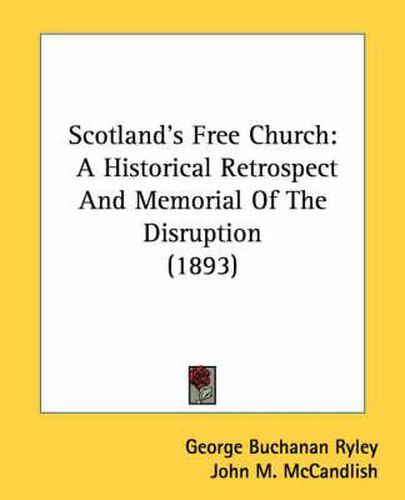Readings Newsletter
Become a Readings Member to make your shopping experience even easier.
Sign in or sign up for free!
You’re not far away from qualifying for FREE standard shipping within Australia
You’ve qualified for FREE standard shipping within Australia
The cart is loading…






Purchase of this book includes free trial access to www.million-books.com where you can read more than a million books for free. This is an OCR edition with typos. Excerpt from book: CHAPTER II Migration of the Scots from Dalriada?Columba, 563; and Irish Monas- ticism?lona?Peculiarities of the Celtic Church. Toward the beginning of the sixth century a migration from Ireland began that was to change the history of Caledonia and to give it the name of Scotland. The Scots of Dalriada in the north of Ireland took possession of what is now the district of Argyll and the Isles, and gave it the name of their fatherland. There were in consequence two Dalriadas, one Irish, the other Caledonian, each held by the same race of Scots. Ireland was the true Scotia: and it was not until the Dalriacls migrated that the transference of the name became possible. Fergus, son of Ere, with two of his brothers, led an expedition of Dalriads to Britain, and founded a Scottish monarchy in the Western Isles. They were Christians, of the type of their time and country: and are said tQ have left Ireland with the blessing of Patrick. Their new kingdom had on the north the barbarous and heathen Picts; on the east the relapsed southern Picts; and on the south the almost pagan Britons of Strathclyde. Their alliances, especially at the first, were naturally with thePicts; though their closest relations were still with their kinsfolk across the narrow sea. It was this that led to the coming of Columba to Britain; with whom the real and credible history of Scotland and its Church becomes more possible. From Columba also the rule of the monastery family over Scottish Christianity took its most definite form, and left its most legible mark on the religion of North Britain for many generations. Just as Ninian brought from Gaul the monastic customs that Martin of Tours had made honourable and sacred, and by them had made Whithern a hallowed place (see f…
$9.00 standard shipping within Australia
FREE standard shipping within Australia for orders over $100.00
Express & International shipping calculated at checkout
Purchase of this book includes free trial access to www.million-books.com where you can read more than a million books for free. This is an OCR edition with typos. Excerpt from book: CHAPTER II Migration of the Scots from Dalriada?Columba, 563; and Irish Monas- ticism?lona?Peculiarities of the Celtic Church. Toward the beginning of the sixth century a migration from Ireland began that was to change the history of Caledonia and to give it the name of Scotland. The Scots of Dalriada in the north of Ireland took possession of what is now the district of Argyll and the Isles, and gave it the name of their fatherland. There were in consequence two Dalriadas, one Irish, the other Caledonian, each held by the same race of Scots. Ireland was the true Scotia: and it was not until the Dalriacls migrated that the transference of the name became possible. Fergus, son of Ere, with two of his brothers, led an expedition of Dalriads to Britain, and founded a Scottish monarchy in the Western Isles. They were Christians, of the type of their time and country: and are said tQ have left Ireland with the blessing of Patrick. Their new kingdom had on the north the barbarous and heathen Picts; on the east the relapsed southern Picts; and on the south the almost pagan Britons of Strathclyde. Their alliances, especially at the first, were naturally with thePicts; though their closest relations were still with their kinsfolk across the narrow sea. It was this that led to the coming of Columba to Britain; with whom the real and credible history of Scotland and its Church becomes more possible. From Columba also the rule of the monastery family over Scottish Christianity took its most definite form, and left its most legible mark on the religion of North Britain for many generations. Just as Ninian brought from Gaul the monastic customs that Martin of Tours had made honourable and sacred, and by them had made Whithern a hallowed place (see f…